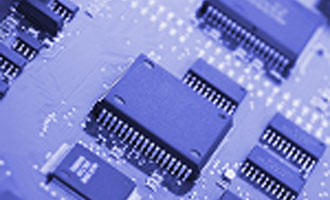
It’s almost 15 years since the first home automation systems were introduced into the European market and so far they have failed to become a regular business. Their raison detre was to reduce energy consumption and add a touch of excitement to our lifestyle. They applied the same technology that had built up a new business in the commercial public and industrial building sector under the title Building Energy Management System or Building Automation System. In the U.K. alone in 1985 we identified 23 suppliers and of these 65 percent were new start companies. Today five companies supply 85 percent of the world market and none of the new starts are around as most were acquired during the consolidation process. The brand names of some are still used because they introduced digital systems well before the majors but sadly they could not grow fast enough to retain their independence. It was not a lack of technology that caused their demise but weak channels of distribution and lack of international exposure.
It's almost 15 years since the first home automation systems were introduced into the European market and so far they have failed to become a regular business. Their raison detre was to reduce energy consumption and add a touch of excitement to our lifestyle. They applied the same technology that had built up a new business in the commercial public and industrial building sector under the title Building Energy Management System or Building Automation System. In the U.K. alone in 1985 we identified 23 suppliers and of these 65 percent were new start companies. Today five companies supply 85 percent of the world market and none of the new starts are around as most were acquired during the consolidation process. The brand names of some are still used because they introduced digital systems well before the majors but sadly they could not grow fast enough to retain their independence. It was not a lack of technology that caused their demise but weak channels of distribution and lack of international exposure.
Will history repeat itself in the domestic energy market where we are seeing a plethora of new companies setting up and no shortage of interest from the investment community to supply funds? In Europe the general consensus of opinion is that despite the synergy provided through the interface with smart grid the inertia will still take up to five years to overcome. However while the pundits debate about its future Memoori's Executive Brief over the last three to four months has identified a strong emerging trend, particularly in the U.S., to press on and develop this market and not just by entrepreneurs setting up new companies.
GE Appliances & Lighting plans to be the first major appliance company to provide a whole-home solution for energy management by going beyond the kitchen to provide insight into energy usage in the family room, the basement, the home office, and all other rooms of the house. From the GeoSpring hybrid hot water heater, Nucleus energy manager and programmable thermostats, to GE appliances, GE is developing solutions to help consumers better manage and control their energy use and costs.
A less emphatic move was announced by Honeywell last month when they announced a supply agreement with EnergyHub, a home energy solutions provider. Honeywell will integrate EnergyHub's technology into its energy management product portfolio, providing consumers with a set of tools to simplify their management of energy and control costs in the home. Given that Honeywell is one of the leading suppliers of domestic environmental controls, Energy Hub is not making the same mistake as the commercial energy management companies, for it has put in place strong channels of distribution.
iControl and uControl have entered into a definitive merger agreement. The merger combines the two US market leaders in broadband home management, and promises to deliver a solution that includes interactive home security, energy management and home health care solutions to broadband service providers, home security companies and utilities. The combined company has launched commercially with several service providers and will announce additional deployments in the near future. They have decided that the time has come to share research and marketing costs. Various estimates of the US market put it at around US$36 million but growing at 56-percent CAGR. We believe that this market size figure is too conservative, but it does show that this business is still in its embryo stage.
Energy efficiency company OPower raised $50 million in third-round financing this month, the funding round was led by Accel Partners and Kleiner Perkins Caulfield & Byers. The announcement suggested that investors are searching for more capital-efficient investments and there's a rising interest in energy efficiency. It is claimed that it was the hottest segment in green investing last quarter, with 17 deals worth a combined $162 million. However OPower is a rather special company for it is active across smart grid and energy management and also is a software-as-a-service provider. Also this month Grid2Home, founded in 2009, a developer of smart energy software, had completed a $4 million round of seed funding, led by Granite Ventures.
So through acquisition and merger, alliance and invested capital the home energy hardware and software business is rapidly developing. While the recent frenzy could be considered an overkill the long term strongly suggest that this fledgling business will become a segment of the smart grid industry. To overcome the inertia, lessons from the past need to be learnt but the interfacing with smart grid and resultant synergy make for a compulsive argument that it will succeed.